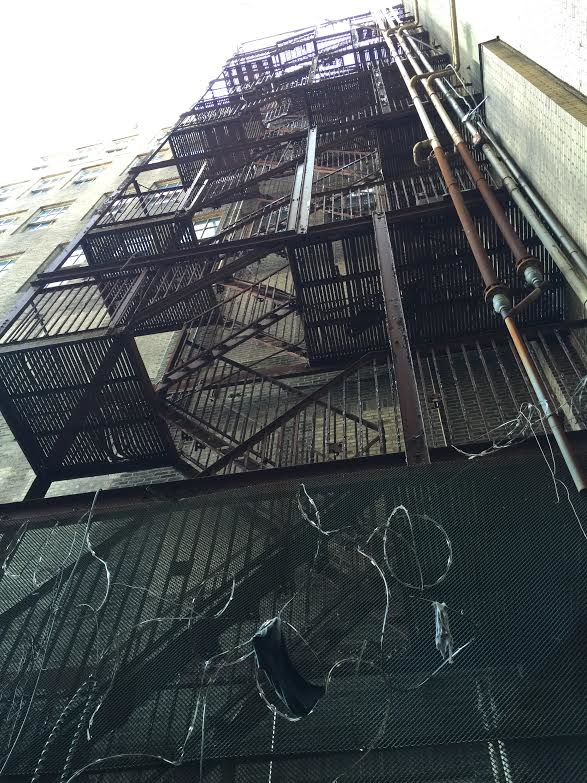Compliance standards in Roof Anchor Points
Before using anchor points, fall protection standards require that they be inspected first to ensure safe working condition. The majority of systems require inspection and testing that are biannual to annual by a certified inspector.
Many of the critical components of the OSHA regulation are due for compliance by November 20, 2017. Non-compliance with these matters can increase the risk of OSHA fines, citations, work injuries and subsequent liability exposure.
Annual inspections include all necessary documentation required by OSHA so that they can be stored on site to ensure that the building owner is in compliance.
*An anchorage, as defined by OSHA, is a secure point of attachment for lifelines, lanyards or deceleration devices. ANSI Z359 defines anchorage as a fixed structural component such as a beam, girder, column or floor that can support the forces exerted in arresting a fall, and introduces the term “anchorage connector” to refer to the component by which the connecting device is coupled to the anchorage. It may be a beam anchor, cross-arm strap, D-bolt, hook anchor, tripod, davit or other secure device that serves as a point of attachment for lifelines, lanyards or deceleration devices.
Anchorages and anchorage connectors must be independent and capable of supporting 5,000lb per employee attached, or designed, installed and used under the supervision of a qualified person as part of a complete personal fall arrest system which maintains a safety factor of at least two. They must also be located high enough for a worker to avoid contact with a lower level should a fall occur.
Applicable Standards:
OSHA 1926.502(d)(21) Personal fall arrest systems shall be inspected prior to each use for wear, damage and other deterioration, and defective components shall be removed from service.
OSHA 1910.66 App C (f) “Inspection.” Personal fall arrest systems shall be inspected prior to each use for mildew, wear, damage and other deterioration, and defective components shall be removed from service if their strength or function may be adversely affected.
Z359.1-2007 6.1.1 Equipment shall be inspected by the user before each use and, additionally, by a competent person other than the user at intervals at no more than one year.
Z359.1-2009 4.6.4 Inspection of Components Not Addressed by a Manufacturer’s Requirements. For components not addressed by a manufacturer’s inspection requirements, the components shall be visually inspected, as a minimum, in a manner and frequency specified by the engineer designing the active fall protection.
Z359.6-2009 E4.6.5. If the original design was performed by an engineer, an engineer or a qualified person under the supervision of an engineer can perform the recertification. If the original design was not performed by an engineer, an engineer should be involved in the recertification if this standard is to be used for that process.
Z359.6-2009 4.6.5 Recertification of Active Fall Protection Systems. Active fall protection systems shall be thoroughly reviewed by an engineer at a frequency to be determined by the original design or other similarly qualified engineer but not to exceed five years. This recertification process shall include a review of the original documents prepared for the system and their continued applicability. As a minimum, the following criteria shall also be considered and the result of the certification shall result in a report or set of documents outlined in Section 3.3.1.
Changes in the hazards and tasks that are addressed by the active fall protection system.
Changes in regulations, standards or other factors affecting the active fall protection system.
Feedback from a representative sample of the competent persons and authorized persons of the fall protection system.
OSHA REGULATIONS:
1910.140(c)(12)
Anchorages used to attach to personal fall protection equipment must be independent of any anchorage used to suspend employees or platforms on which employee’s work. Anchorages used to attach to personal fall protection equipment on mobile work platforms on powered industrial trucks must be attached to an overhead member of the platform, at a point located above and near the center of the platform.
1910.140(c)(13)
Anchorages, except window cleaners’ belt anchors covered by paragraph (e) of this section, must be:
1910.140(c)(13)(i)
Capable of supporting at least 5,000 pounds (22.2 kN) for each employee attached; or
1910.140(c)(13)(ii)
Designed, installed, and used, under the supervision of qualified person, as part of a complete personal fall protection system that maintains a safety factor of at least two.
OSHA Live Training – An Introduction To Fall Protection OCTOBER 28, 2013 ~ JACK BENTON https://ehssafetynewsamerica.com/2013/10/28/osha-training-an-introduction-to-fall-protection/
ARVE Error: No oembed src detected
ARVE Error: No oembed src detected
ARVE Error: Need Provider and ID to build iframe src.
Step 1: Schedule Inspection – Compliance Audit
During annual inspections , our engineering partner performing the inspection will also review any additional compliance needs as outlined in the changed regulations.
To save building owners both time and money, it is extremely important for building ownership and/or management to research and produce all existing building drawings, supporting documentation on any current anchorage points, and any reports regarding post-installation testing data on the existing anchorage points.
Step 2: Perform Inspection
Including analysis of the property in conjunction with the revised regulations. Areas evaluated will include current anchorage points, fall-protection-system requirements, verification of testing, and required documentation.
Step 3: Discuss Analysis and Compliance Requirements
The analysis provided will outline the inspection of your property’s existing anchorage points, as well as the specific requirements that were advised to be addressed in order to be compliant with OSHA’s changed regulations
Step 4: Execute Requirements
Coordinating with third-party engineering partners and/or Valcourt Safety Systems to fulfill the requirements of the revised regulations. This may consist of testing and certifying existing anchorage, and/or designing solutions for additional anchorage if required
Step 5: Manage Documentation
Processes are in place to meet the documentation demands, regulations and standards. This includes the required proof-of-compliance from Val-court, proper letters of assurances, required work plans, testing reports, inspection reports, and certifications.






 NFPA 80 requirements
NFPA 80 requirements
You must be logged in to post a comment.